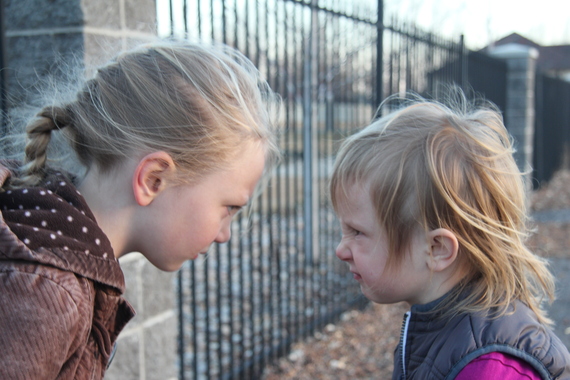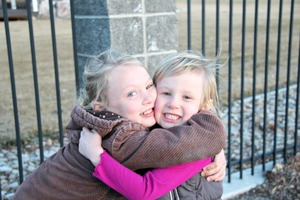If you spend much time at my house, you will probably see the following, regular occurrence. My 10- and 8-year-old daughters are each talking to me, both in tears, simultaneously trying to explain conflicting sides to the story of their latest altercation. I can only assume from their vocal urgency that they believe whoever tells me first will get the most sympathy.
Each child's story aims to place the majority, if not all, of the blame on the other person, and it takes some Sherlock-like detective work to discover the truth of what actually occurred. Then we spend the next 15 minutes in timeouts and trying to get each child to apologize to the other. My 10-year-old would rather scrub 12 toilets than say, "I'm sorry." She spends several minutes grimacing and contorting her face before she finally growls out the words. No one in the room believes their sincerity once she finally spits them out, and I can only wonder if it was effective to compel her to say it.
I hear parents prompting their children to say, "I'm sorry," regularly and in a variety of situations. It happens at play dates when a toddler takes a toy from their little friend. It happens when tempers flare at the park and one or both children get physical. It happens when a child bumps into a woman at the grocery store because they rejected parental advice about not running with a shopping cart. Each time something like this occurs, we coerce our children to say, "I'm sorry," but are they really or are they just mimicking our words so we will let it go and move on with our day?
I want my children to be sorry, not just say it. I want them to know why they are sorry, and to leave the situation with a plan to avoid repeating it. That is why I changed the apology process at our house. This is what it looks like now:
Part 1: Verbal Apology with Recognition
My children are not allowed to say the phrase, "I'm sorry," on it's own. Instead, when they start with the words, "I'm sorry," I pipe in, "For what?" This add-on to the universal, two-word apology sentence requires the child to recognize and take ownership of their actions that caused harm to another person. They are admitting to themselves and the nearby public, that they did something worth being sorry for. This realization almost always results in their actually feeling sorry on some level.
Part 2: Plan for Change
Topping the list of my most frustrating parenting experiences, is watching a child leave a timeout session, only to be back moments later for the same offense. This is why, immediately after after, "I'm sorry," and the subsequent "for what" explanation, my children are required to state their plan to act or react differently the next time. Occasionally, one of the guilty parties will look at me and tell me they don't know what they could have done differently. This provides a great teaching moment for me as I share options with them on how they could control or affect similar situations more effectively in the future.
Part 3: Make it Right
Did the action, they now feel sorry for, cause damage? Is there something they can do to make restitution? If so, they are obligated to do what lies in their power to solve the problem of their creation. Begrudgingly saying the words, "I'm sorry," won't fix a baseball sized hole in the neighbor's window. No, if they took something, they need to give it back. If they broke something, they need to attempt to repair it or earn money to cover the damage. The work required to correct their harmful actions gives children additional incentive to seek other ways to solve their problems than violence. It encourages them to show greater respect for other's personal property, and it reinforces the concept of accountability that I want my children to embrace.
Part 4: Lots of Love
The best and most important part of our apology process is the love fest at the end. I tell my children how much I love them. I remind them of how much they love each other, and then we all hug it out. This encourages forgiveness between the warring parties, and helps us move on in a positive manner.
I wish I could say that disputes were an extinct animal at our house, but they still rear their ugly heads up all too often. I will say that the aftermath of these occurrences has altered dramatically. Instead of a bitter, forced, "I'm sorry," exchange that means absolutely nothing to anyone, my children often end up tearfully explaining their actions to each other and expressing their feelings of hurt and frustration. They are learning to work it out together, and our time out chair is a little less busy.
Visit Amy at her blog Planning Playtime, or be friends with her on Facebook and Twitter.

